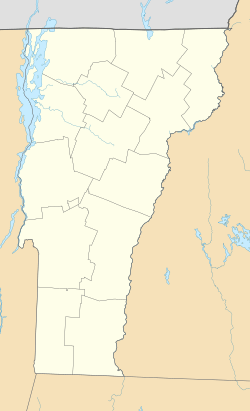Bridge 22 facts for kids
Quick facts for kids |
|
|
Bridge 22
|
|
 |
|
| Location | Old Creamery Rd., Bradford, Vermont |
|---|---|
| Area | 1 acre (0.40 ha) |
| Built | 1934 |
| Built by | American Bridge Company |
| Architectural style | Pony truss |
| NRHP reference No. | 10000878 |
| Added to NRHP | November 3, 2010 |
Bridge 22, also known as the Creamery Bridge, is a historic bridge in Bradford, Vermont. It carries Old Creamery Road over the Waits River. This bridge was built in 1934. It is a special type of bridge called a pony truss. Even though it was built later than most bridges of its kind, it is very well-preserved. In 2010, it was added to the National Register of Historic Places. This means it is an important part of history.
Discovering Bridge 22: A Historic Vermont Landmark
Bridge 22 is found at the south end of Bradford village. Old Creamery Road uses this bridge to connect the village to Vermont Route 25. The Waits River flows north here. It then turns east to join the Connecticut River.
What Makes Bridge 22 Special?
This bridge is a single-span Warren pony truss. It is about 105 feet (32 meters) long. The total width of the bridge is about 17 feet 6 inches (5.3 meters). The part where cars drive is about 16 feet 1 inch (4.9 meters) wide. The bridge deck is made of metal panels. These panels are covered with asphalt. Strong I-beams support the deck. A water pipe is also attached to the south side of the bridge.
How Was Bridge 22 Built?
The American Bridge Company made the parts for this bridge. They built the trusses in 1934. Their factory was in Ambridge, Pennsylvania. The Warren pony truss was a common bridge design in Vermont. However, by the 1930s, new ways of building bridges were becoming popular. The state also started to use standard bridge designs. So, this bridge was one of the last of its kind built in Vermont.
It replaced an older wooden bridge. The pony truss design was chosen because it worked best for this spot. Other designs might have needed supports under the bridge deck. Some local townspeople might have helped build the bridge. They may have worked instead of paying property taxes.



